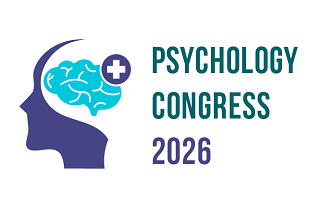3rd International Congress on
Psychology & Behavioral Sciences
March 26-27, 2026 | Osaka, Japan

Address: 1 Chome-9-15 Shinkitano, Yodogawa Ward, Osaka, 532-0025, Japan.
Psychology Congress 2026

Federation University, Australia
Title : A systematic review of the prevalence of ADHD and autism among those experiencing gambling harm
Abstract:
Background: Existing research finds that those with ADHD and autism are more susceptible to developing harmful gambling behaviour with more severe symptoms than neurotypical people (Brandt et al., 2017; Vintró-Alcaraz et al., 2024).
Objective: This systematic review aims to determine the prevalence of ADHD and autism in those who experience gambling harm globally, to establish an argument for a priority population needing specific intervention and prevention plans.
Methods: The methodology for the review was developed using frameworks by Munn et al. (2015) and using the PRISMA checklist to ensure structural soundness (Page et al., 2021). Search terms were developed with reference to each included database and individually tested by database for formatting accuracy.
Results: 558 studies were included for screening, with 245 duplicates removed automatically. 14 of those studies were included for extraction and analysis. R was used to conduct a meta-analysis on the included studies reporting ADHD data, while 2 included studies reported data on autism had a narrative summary of their results. The rate of prevalence for ADHD in gambling harm was 24%, with a high rate of heterogeneity suggesting a lower rate may be the true rate.
Conclusion: The results of this review confirm the presence of ADHD in those experiencing gambling harms and makes a compelling case for those with ADHD to be seen as a priority group for prevention and intervention efforts. The results suggest that while autism is likely to be as much of a priority as ADHD is, more research is needed in this area.
Biography:
Lochie is a second year PhD student with Federation University, in a translational research project in collaboration with Safer Care Victoria (Dept of Health), the Victorian Collaborative Centre for Mental Health and Wellbeing and Western Alliance. He has previously completed a Master of Public Health and aims to combine psychology, lived experience as someone with ADHD and public health knowledge to translate research directly to policy and practice with the help of governmental collaborators
